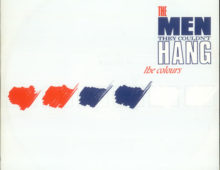Tagged with Battle of Trafalgar
Resource : The Fighting Temeraire
JMW Turner is one of Britain’s best loved artists. He became known as the ‘painter of light’ due to his trademark style and use of colour in landscapes and seascapes. The Fighting Temeraire, one of his most famous oil paintings, shows the warship Temeraire being towed by a steam-powered tug on its last ever journey before being broken up. It is said to symbolise the decline of Britain’s naval power, the passing of the ‘glorious’ age of sail and the growth of ‘modern’ technology in an increasingly industrialised Britain. The industrial revolution and the history of the Royal Navy were therefore both saluted, through Turner’s revolutionary brand of romantic landscape painting.
Resource : The Plumb-Pudding in Danger
This print was one of over a thousand satires produced by the celebrated caricaturist, James Gillray, who became known as the ‘father of the political cartoon’. In the 18th century, cartoons and caricatures were a popular way of mocking the establishment and calling them to account. They would be discussed and enjoyed in shop windows, coffee houses and taverns. The arrival of the industrial printing press in the 1800s helped to spread them far and wide, through broadsides (posters), newspapers and pamphlets. This one was inspired by the resumed hostilities and ongoing rivalry between Britain and France in 1805.
Resource : Nelson’s Coat
This coat was worn by Admiral Lord Horatio Nelson when he commanded the British fleet at the Battle of Trafalgar, in 1805. In this major sea battle, the British navy defeated the combined fleets of the French and Spanish navies, temporarily ending Napoleon Bonaparte’s threat to invade Britain. Although this coat made Nelson highly conspicuous during the battle, he chose to wear it on deck to inspire his men. Nelson was shot at the height of the battle and mortally wounded. The bullet hole can be seen on the left shoulder of the coat.
Resource : French revolutionary and Napoleonic wars (1792-1815)
A series of wars which reconfigured nations and societies within Europe, across the Atlantic, and far beyond, culminating in the legendary Battle of Waterloo.
Resource : War and the international order
The wars precipitated by the struggles for independence and attempts at empire building that characterise the Age of Revolution, and their impact on the changing world map.


